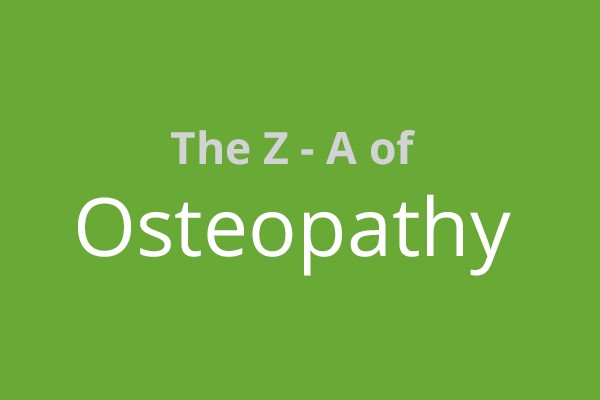Thorax
It’s the whole trunk of our bodies between the base of the neck and the top of the abdomen. Place a finger in the little hollow where it seems your collar bones almost meet in the middle. That’s the top boundary of the thorax. Now gently press your fingertips in underneath the bottom of your ribs. That’s where the thorax ends and the abdomen starts.
What’s in there? Well, it’s the important bits. Heart and lungs. They’re protected by the rib cage and breastbone which act as a suit of armour. Ribs also help with breathing though so it’s not a rigid cage. The ribs have joints and they need to be able to move up and down.
The thoracic spine runs down the back of the cage creating a channel for the spinal cord to run down to the lower parts of the body. There are exits for nerves supplying the internal organs.
It’s no wonder that Osteopaths focus on this part of the body whether it hurts or not. We’re always doing a bit of detective work to make sure all is well. Getting movement and posture working well around the thorax is a fundamental part of good health.
Getting the right SADDLE height
Here’s a top tip from Chris Hoy, winner of 6 Olympic gold medals for cycling. I love this because it’s not aimed only at competitive cyclists but written for anyone riding a bike – all ages, all abilities, all of us. And it’s so simple…
“Get your saddle at the right height. That will make a big difference for both comfort and efficiency, and reduces your chance of injuring your knees or back. It will also help you go faster.
Start by leaning your bike against a wall or a fence. Get the pedals in the six o’clock position and then put your heels on the pedals. Not the ball of your foot, but the heel on the pedal axle. And when the pedal is at the bottom of the stroke, at six o’clock, you should have your leg fully locked out. That means when your foot is in the right position for pedalling; that is, when it’s the ball of your foot there, there will be a slight flexion in the knee. Just enough, and not too much.
People tend to have their saddle too low, and that can cause all sorts of problems with your knees, as well as meaning you aren’t getting full power from your legs.
When you get the height right you avoid all that – and also go faster”
Running
It makes us feel brilliant and it’s good for us. It’s free. It’s fun. It gets us out into the fresh air. It’s something we can do with friends. We can make it a challenge if we want. Or a laugh. What’s not to like?
What’s not to like is feeling unfit and so not wanting to try. Or feeling embarrassed. Or feeling like there’s no time, or nobody to run with. It’s not good if we feel anxious about safety or worried about injuries.
I’ve got two suggestions to solve the worries. The first is to join a running group. How about trying the Red Kite Runners? They’re a friendly social local running group and they welcome everyone. Fellow runners in the group will always give plenty of advice and encouragement so that could solve a lot of barriers to getting off the couch. My second suggestion is not to be afraid of seeking further help when you need it. Osteopaths work on alignment, balance and gait mechanics (improve your PB) as well as diagnosing and advising on injuries (stay fit and well). Again I’m asking – what’s not to like?
Quiz
Who doesn’t love a quiz? Here’s a question for you….
In the week before Christmas every year, the most common cause of back pain that I see in my clinic is caused by which of these?
a) Lifting things down from the attic
b) Wrapping presents
c) Putting the tree up
d) Looking up at the sky for too long to see if Santa’s on his way
Did you choose b) Wrapping presents?
Believe it or not, that’s the answer! People tend to get down on the floor to wrap presents and they hold a position kneeling down and slightly bent forward. If you fatigue the muscles in that way for too long, you’ll end up firstly in spasm, and secondly in my clinic getting treatment. The best advice I can give you is to clear a table and do the wrapping there. If you have to do it on the floor then get up and move around as often as possible. You really don’t want to be coming to see me for an emergency appointment just as Christmas arrives!
Plantar Fasciitis
There’s a thin sheet of tissue running through the soles of our feet. The natural tension in it helps to keep the mechanics of the foot working correctly and helps to support our arches. ‘Plantar’ means sole of the foot. ‘Fascia’ is the name for the thin tissue sheet. ‘Itis’ is inflammation. Like appendicitis or arthritis. So – plantar fasciitis.
When the plantar fascia gets inflamed it really hurts, especially when walking or running. But it can be treated.
You need a diagnosis first as other conditions can cause foot pain. Then there’s a three-way approach to deal with it. The right shoes. The right exercises. Treatment to the right muscles in the legs. And there’s a fourth thing as well. You have to reduce the inflammation and that means the right amount of rest. It all takes time time. That’s the hardest thing of all.

